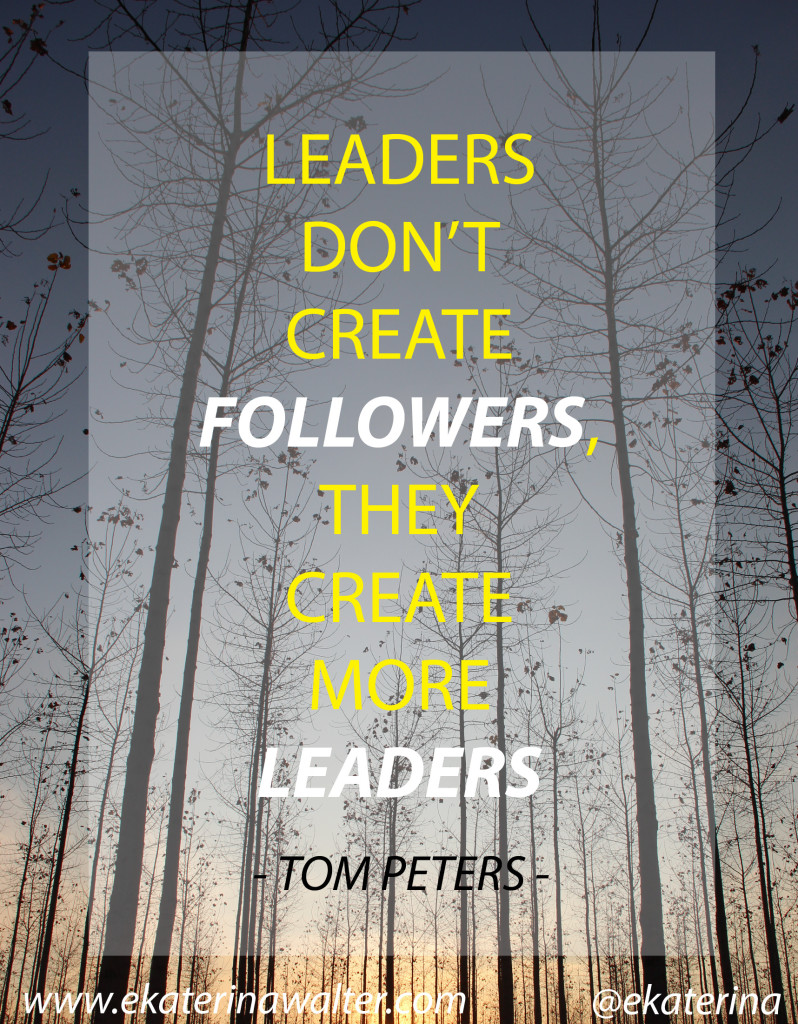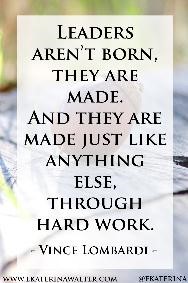When it comes to leadership there is no one size fits all. Every leader has his/her own personality, style, and approach to leading teams. That said, there are leadership truths and myths that seem to surface time and again when I talk to successful entrepreneurs and leadership gurus. Here are several that are consistently brought up and the ones I’ve personally observed and experienced.
Leadership is a skill, not a genetic disposition. Click To TweetMyth 1: Leaders work smarter, not harder.
 I have never fully understood the “work smarter, not harder” statement. There are definitely ways to be smarter about prioritizing your tasks effectively, planning your day wisely to increase your productivity, and, as a leader, to know when and what tasks to delegate. But every single successful person I know have always worked very hard on realizing his/her dreams. Great leaders empower their teams to do more, they are very protective of their time, and they are shrewd in applying their knowledge and experience in order to move forward and avoid mistakes either they themselves or others made in the past. One could call that “working smart”. But nothing great has ever been achieved without working hard. True leaders lead by example, they are first in and last ones out, they are fully invested in the vision of their ventures and, through showing their dedication, they inspire people around them to show the same kind of commitment and display the same behaviors.
I have never fully understood the “work smarter, not harder” statement. There are definitely ways to be smarter about prioritizing your tasks effectively, planning your day wisely to increase your productivity, and, as a leader, to know when and what tasks to delegate. But every single successful person I know have always worked very hard on realizing his/her dreams. Great leaders empower their teams to do more, they are very protective of their time, and they are shrewd in applying their knowledge and experience in order to move forward and avoid mistakes either they themselves or others made in the past. One could call that “working smart”. But nothing great has ever been achieved without working hard. True leaders lead by example, they are first in and last ones out, they are fully invested in the vision of their ventures and, through showing their dedication, they inspire people around them to show the same kind of commitment and display the same behaviors.
Gary Vaynerchuk is a successful serial entrepreneur and his perspective is that there is no substitute for doing the work. “We’re living through a period right now where we have a lot of very smart people looking at math, and analytics, and efficiencies,” says Vaynerchuk. “I think those are all great things to take pride in, but I also think you need to put in the work… You can call out all the best business opportunities you want, but the bottom line is that nobody ever got paid to make snow-angels.”
“I never dreamed about success. I worked for it.” – Estee Lauder
“There are no secrets to success. It is the result of preparation, hard work, and learning from failure.” – Colin Powell
Myth 2: Leaders have all the answers.

On the contrary. The best leaders have a clear understanding of their own limitations. They know that success is a team sport and there is no such thing as a “self-made” man. They realize that it takes a diverse team to truly innovate. They search for passionate people in diverse areas of expertise and bring them together. Great leaders listen more than they speak. They listen with the goal to understand, not the goal to answer. They hire amazing teams and solicit regular input from team members. They admit their mistakes and empower their people to execute on the company’s vision through their own knowledge and initiative vs. a dictate from above.
Truly amazing leaders empower others to become leaders. Their higher goal is to work themselves out of the job so that if they are not around, the organization functions just as successfully as when they are.
“Leaders don’t create more followers, they create more leaders.” – Tom Peters
“A leader is best when people barely know he exists, when his work is done, his aim fulfilled, they will say: we did it ourselves.” – Lao Tzu
Myth 3: Great leaders are always in the spotlight.
 It is true that if you are a leader of the company there is an expectation that you will also be a company’s spokesperson. But leadership comes in many forms. You don’t have to be on the organization’s executive team to be a leader. True leaders (whether they are at the helm or not) are humble. They don’t much care about the spotlight. They care about the results. And that comes from focus.
It is true that if you are a leader of the company there is an expectation that you will also be a company’s spokesperson. But leadership comes in many forms. You don’t have to be on the organization’s executive team to be a leader. True leaders (whether they are at the helm or not) are humble. They don’t much care about the spotlight. They care about the results. And that comes from focus.
Some of the greatest leaders of our time were simple men who shied away from limelight and yet have transformed industries and took their companies to new heights.
In his book Good to Great Jim Collins says that exceptional leaders channel their ego needs away from themselves and into the larger goal of building a great company. “It’s not that [they] have no ego or self-interest,” says Collins. “Indeed, they are incredibly ambitious – but their ambition is first and foremost for the institution, not themselves.” These amazing leaders, Collins found, “are a study in duality: modest and willful, humble and fearless.” I bet you have never heard of Darwin E. Smith or Colman Mockler, but these men brought glory to the brands we currently admire, the companies that lead (and are still leading) the industry.
When Smith became CEO of Kimberly-Clark, the paper company’s stock had fallen 36% behind the general market. In 20 years of his tenure, Smith transformed the brand into the leading paper-based consumer products company in the world. Under his leadership, Kimberly-Clark generated cumulative stock returns 4.1 times the general market and surpassed its direct rivals. In retirement, Smith humbly reflected on his outstanding performance saying simply: “I never stopped trying to become qualified for the job.”
Mockler was the CEO of Gillette from 1975 to 1991 and during his leadership faced three take-over attacks that threatened to destroy the company. If the company capitulated, the executive team stood to receive great compensation, but Mockler fought for the future greatness of the organization he believed in and won. He went on to lead Gillette to amazing growth and fantastic returns. Publicity-shy Mockler was humble and gracious man who declined most of the requests to be interviewed and photographed, but no one who knew this amazing leader have mistaken his modesty for weakness.
“You can accomplish anything in life, provided that you do not mind who gets the credit.” – Harry S. Truman
“It’s alright to be Goliath but always act like David.” – Philip Knight
Myth 4: Leaders are always “on”
Even though great leaders work hard, they realize that they need the space to be able to strategize, to think, to create.
“’Restore connection’ is not just for devices,” cautions Arianna Huffington. “It is for people too. If we cannot disconnect, we cannot lead.” Leaders like Steve Jobs and Bill Gates were known to go away for extended periods of time to reconnect with themselves, their vision, and their ideas. Leaders need to find that place of wisdom, strength, and real connection (with themselves and others) and they need to lead from that place.
Smart leaders also build the culture of creativity through encouraging their employees to take time to reflect.
“Creating the culture of burnout is opposite to creating a culture of sustainable creativity,” says Arianna Huffington. “This is something that needs to be taught in business schools. This mentality needs to be introduced as a leadership and performance-enhancing tool.”
Myth 5: Great leaders are born, not made
 “Leaders aren’t born, they are made. And they are made just like anything else, through hard work. And that’s the price we’ll have to pay to achieve that goal, or any goal.” – Vince Lombardi
“Leaders aren’t born, they are made. And they are made just like anything else, through hard work. And that’s the price we’ll have to pay to achieve that goal, or any goal.” – Vince Lombardi
“The most dangerous leadership myth is that leaders are born – that there is a genetic factor to leadership. This myth asserts that people simply either have certain charismatic qualities or not. That’s nonsense; in fact, the opposite is true. Leaders are made rather than born.” – Warren G. Bennis
Anyone can excel at anything if they truly put their mind to it.Leadership is a skill, not a genetic disposition. Enough said.
What other myths of leadership have you encountered? Would love to hear your thoughts and experiences.
Anyone can excel at anything if they truly put their mind to it. Click To TweetOriginally published in Forbes
